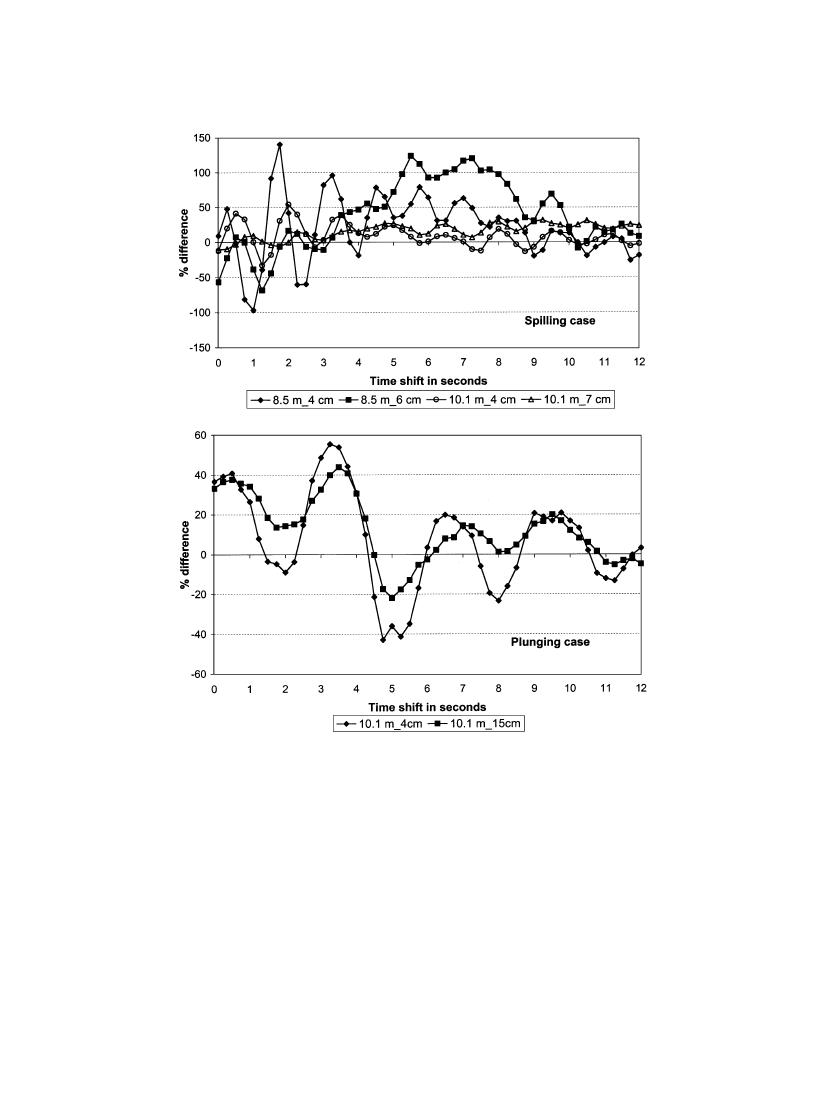
208
P. Wang et al. / Coastal Engineering 46 (2002) 175211
Fig. 26. Time averages of the ``shifted'' cross-shore flux in comparison with flux obtained from the product of time-averaged cross-shore current
and time-averaged concentration. Legends refer to distance from the shoreline and sensor elevation.
indicates that the net sediment transport is directed
equilibrium condition during the experiments, net
offshore due to the near-bed seaward-directed flow
cross-shore sediment flux should be close to zero
and the large near-bed sediment concentration. The
along most of the profile. No appreciable gradients
calculated offshore sediment flux is substantial and
in longshore current and sediment concentration, and
conflicts with the stable beach profile. This, together
therefore in longshore sediment flux, were measured
with the great temporal variations of both cross-shore
over the middle section of the test beach. This uniform
current and sediment concentration, leads to the con-
longshore transport regime should not cause any
clusion that cross-shore sediment flux cannot be
morphological changes and surveys confirmed that
estimated accurately via the product of time-averaged
this was the case. The product of time-averaged
velocity and time-averaged sediment concentration.
velocity and time-averaged concentration, however,



 Previous Page
Previous Page
